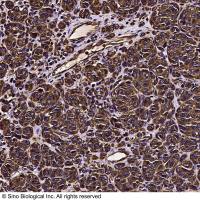Analysis of Asparagine-Linked Oligosaccharides by Sequential Lectin-Affinity Chromatography
互联网
400
Sugar moieties on the cell surface play one of the most important roles in cellular recognition. In order to elucidate the molecular mechanism of these cellular phenomena, assessment of the structure of sugar chains is indispensable. However, it is difficult to elucidate the structures of cell surface oligosaccharides because of two technical problems. First is the difficulty in fractionating various oligosaccharides heterogeneous in the number, type, and substitution patterns of outer sugar branches. The second problem is that very limited amounts of material can be available, which makes it difficult to perform detailed structural studies. Lectins are proteins with sugar-binding activity. Each lectin binds specifically to a certain sugar sequence in oligosaccharides and glycopeptides To overcome the aforementioned problems, lectins are very useful tools. Recently, many attempts have been made to fractionate oligosaccharides and glycopeptides on immobilized lectin columns. The use of a series of immobilized lectin columns, whose sugar-binding specificities have been precisely elucidated, enables us to fractionate a very small amount of radioactive oligosaccharides or glycopeptides (∼10 ng depending on the specific activity) into structurally distinct groups. In this chapter, we summarize the serial lectin-Sepharose affinity chromatographic technique for rapid, sensitive, and specific fractionation and analysis of asparagine-linked oligosaccharides of glycoproteins.









